
Hungry for a donut? This friendly blue robot is ready to take your order. Thanks to San Francisco artist Eric Joyner, they’re all baked to perfection fresh on the premises.
Pre-Joyner, I was pretty ho hum about robots. They seemed cold, mechanical, and well . . . robotic. Nothing warm and fuzzy there.
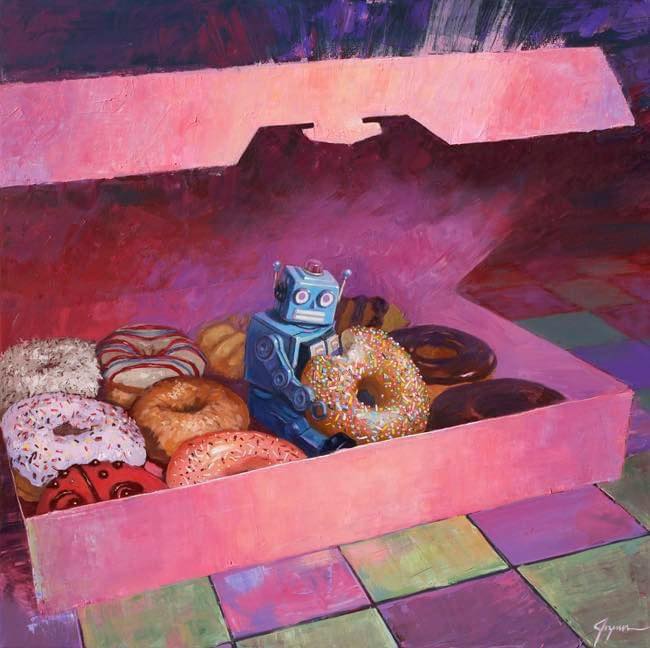

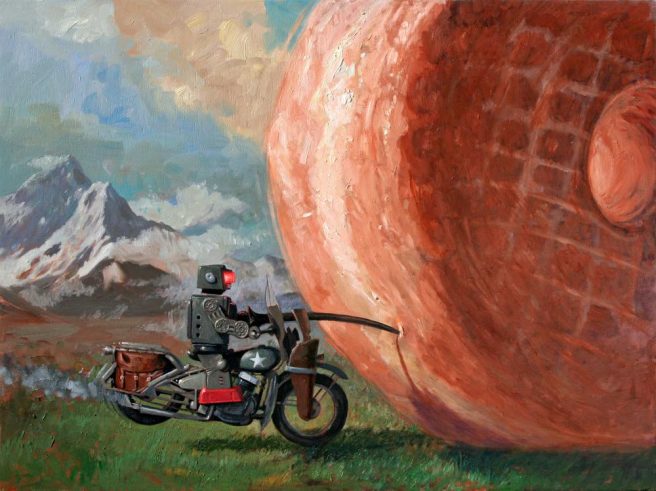
But the more I looked at Eric’s playfully surreal, uber imaginative, sometimes bizarre paintings, the more fascinated I became with his pop/sci-fi/nostalgic world showing robots and donuts interacting in all kinds of fascinating scenarios.
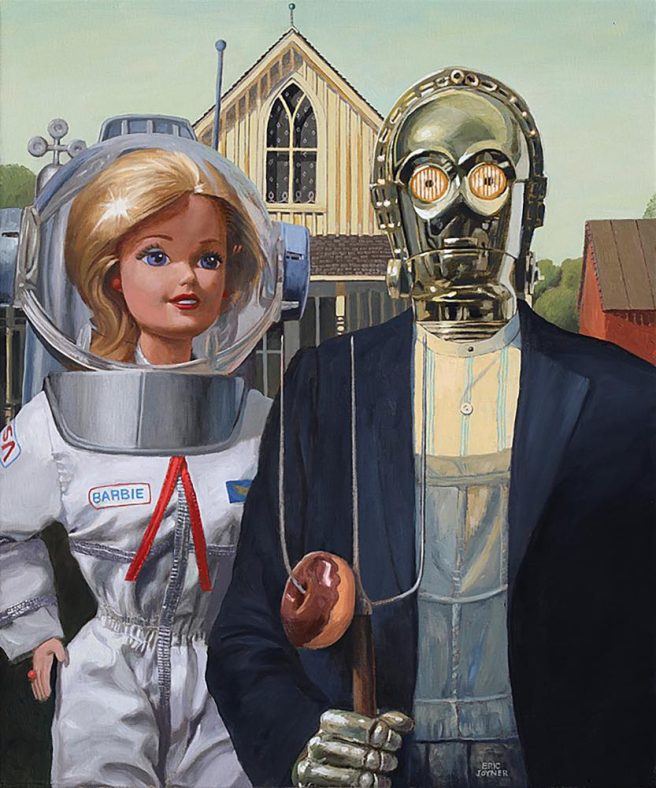

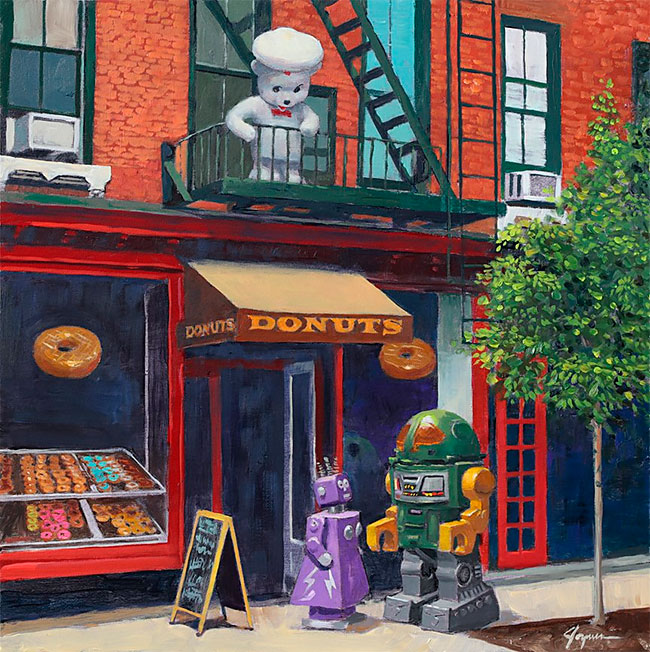
So why robots and donuts, and how did they become his signature motif?
Joyner describes his childhood in San Mateo as “uneventful.” He read comics, played sports, attended school. He started drawing in kindergarten and remembers being impressed by a huge Van Gogh exhibit he saw at the de Young fine arts museum. During grade school, teachers and classmates praised his talent; some of his 4th grade paintings were selected for an extended statewide tour.
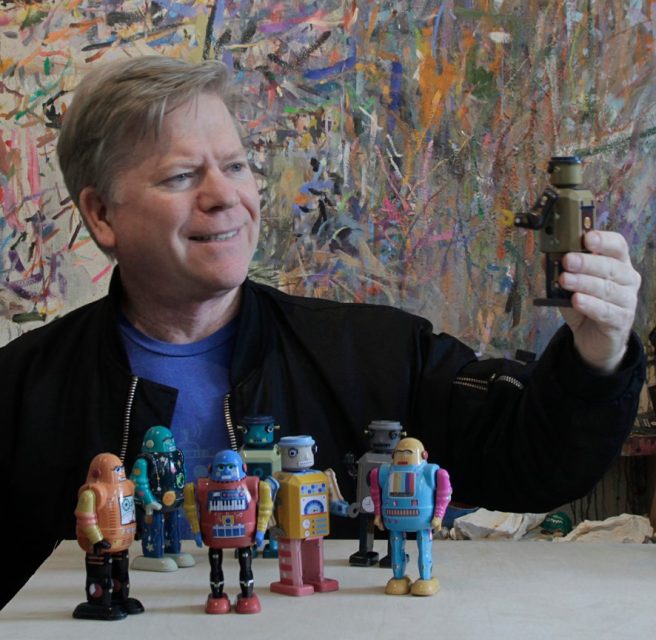
In high school he started painting in watercolors and with the encouragement of his art teacher, decided to pursue art as a career. After graduation he attended the Academy of Art in San Francisco, where he majored in illustration. He then worked in the commercial sector for the next fifteen years as an illustrator, animator and texture mapper, creating art for such clients as Mattel Toys, Levi’s, Microsoft and Showtime. But not feeling quite fulfilled, he decided to try something different: fine arts.
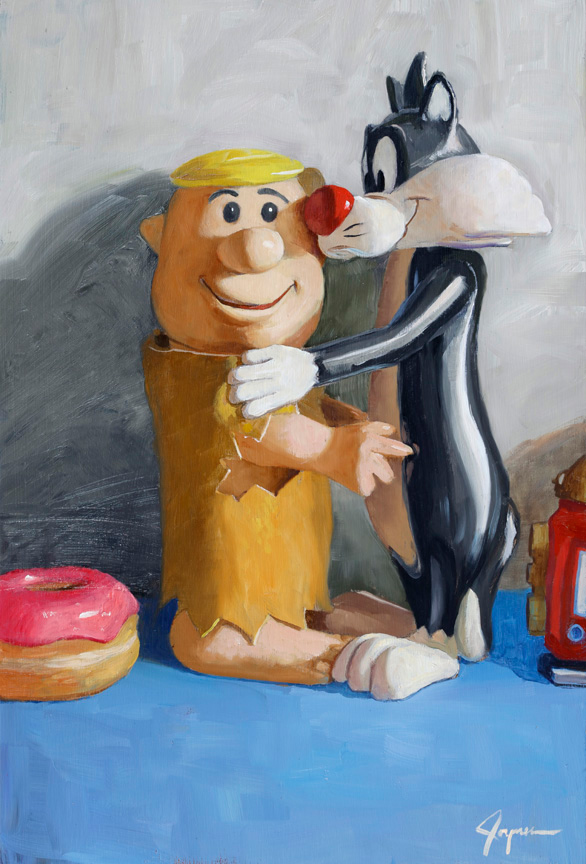
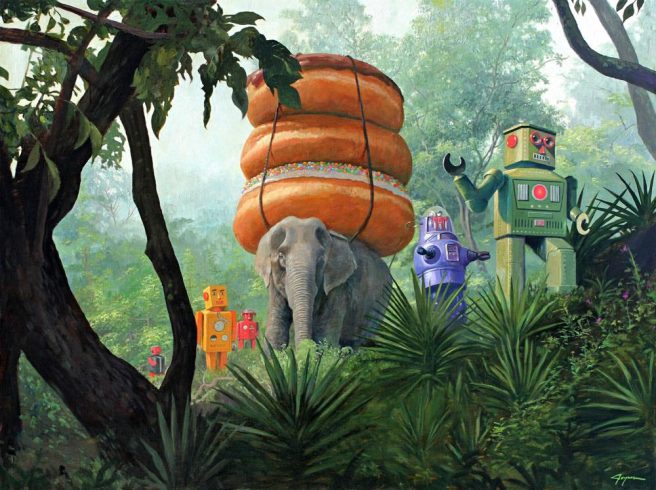
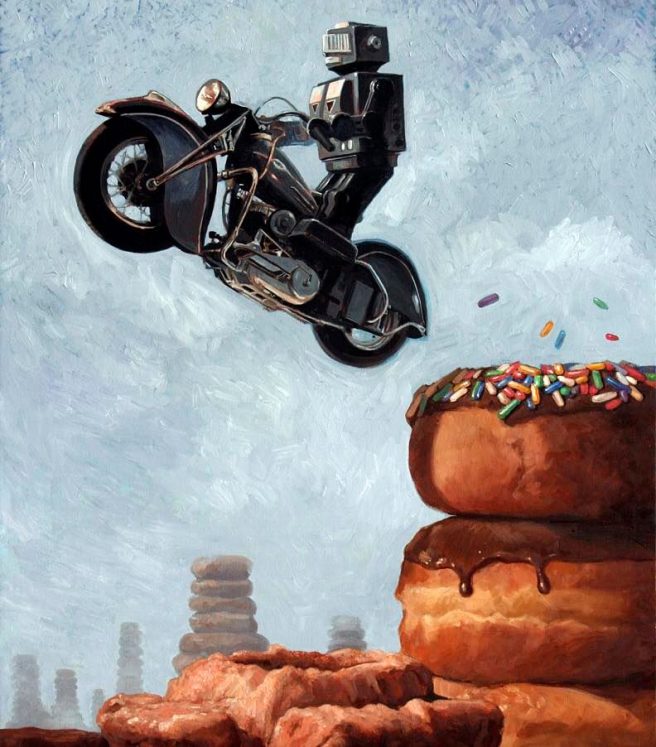
At this crucial juncture, he decided he would only paint things he liked. His work centered around four themes: San Francisco urbanscapes, old newspaper cartoon characters, Mexican masks, and Japanese (tin) toy robots (which he began collecting in his 20s). Since robots offered lots of possibilities and were the most popular with his friends, he decided to focus solely on them.
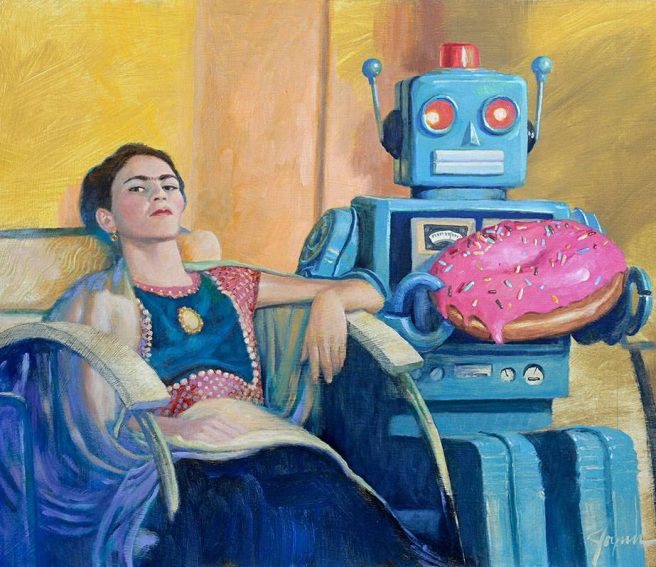
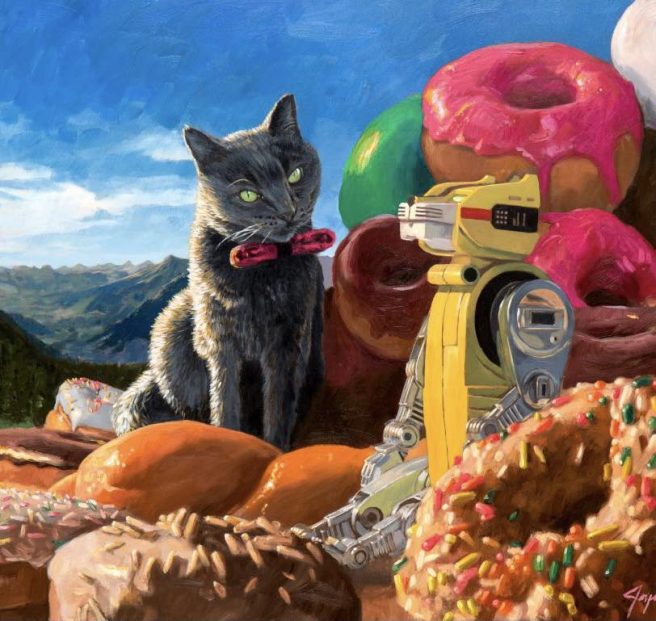
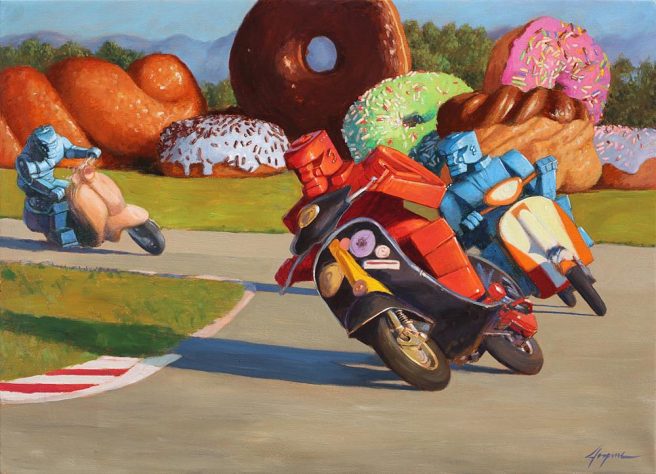
He painted robots for several years; they looked great but eventually he grew bored. The robots needed a nemesis, something to play off of. After seeing Jeff Daniels painting a still life of donuts in the movie, “Pleasantville” (which reminded him of Wayne Thiebaud’s cakes), he had an epiphany.
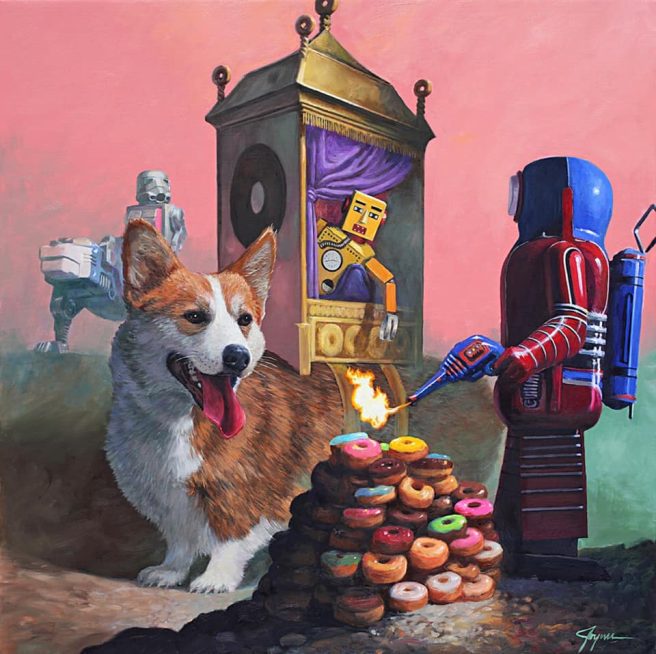
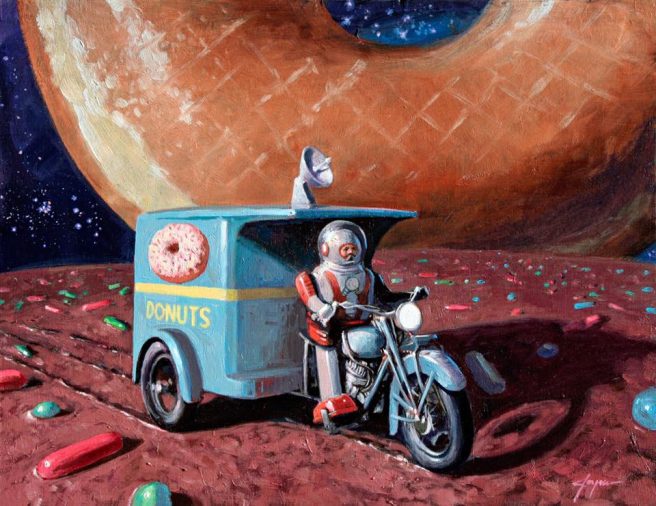

The combination of robots and donuts seemed random, even absurd, but somehow it fired up his imagination. What had been missing was the narrative aspect in his pictures, an element of conflict. With a story to tell, he could humanize the robots, convey emotions and behaviors, draw viewers into the action. Portraying donuts both as adversaries and objects of desire has proven to be precisely what Joyner needed.
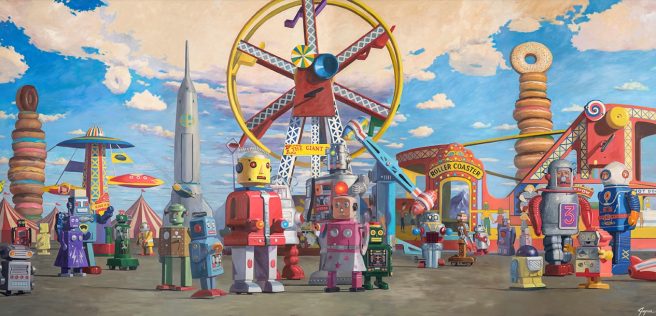
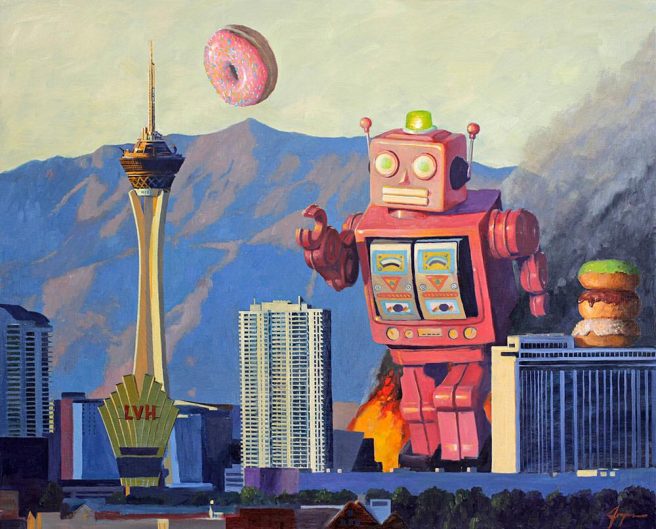

He works primarily in oils, and describes his process like this:
First I get a kernel of an idea, then think about it, expand upon it… consider all the possibilities. I may do some sketches, depending on how lost I am. Then I do research on the subject I want to paint. Next, I may photograph some of my toy robots. Then on the computer I will combine the sketches, research and photos into a composition. Then after transferring the image to the canvas, I spray it with fixative. Next is a thin wash of oil paint (1/2 thinner, 1/2 Galkyd); a brown or grey color. After that drys I work from dark to light, background to foreground, thin to thick and fuzzy to sharp. I mix regular oil paints with alkyds, so the paint drys faster. After a couple weeks I can varnish it, usually spray varnish.
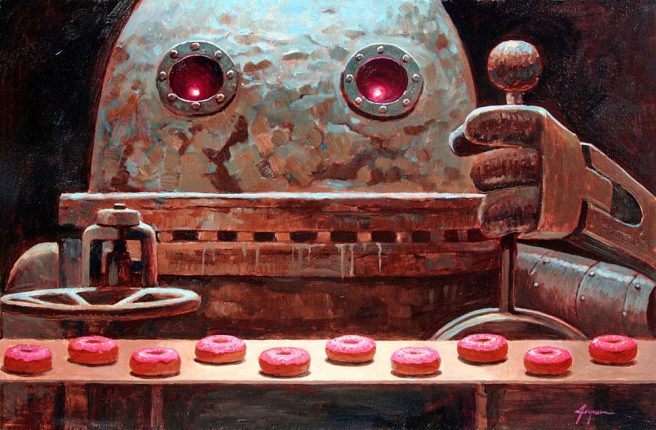
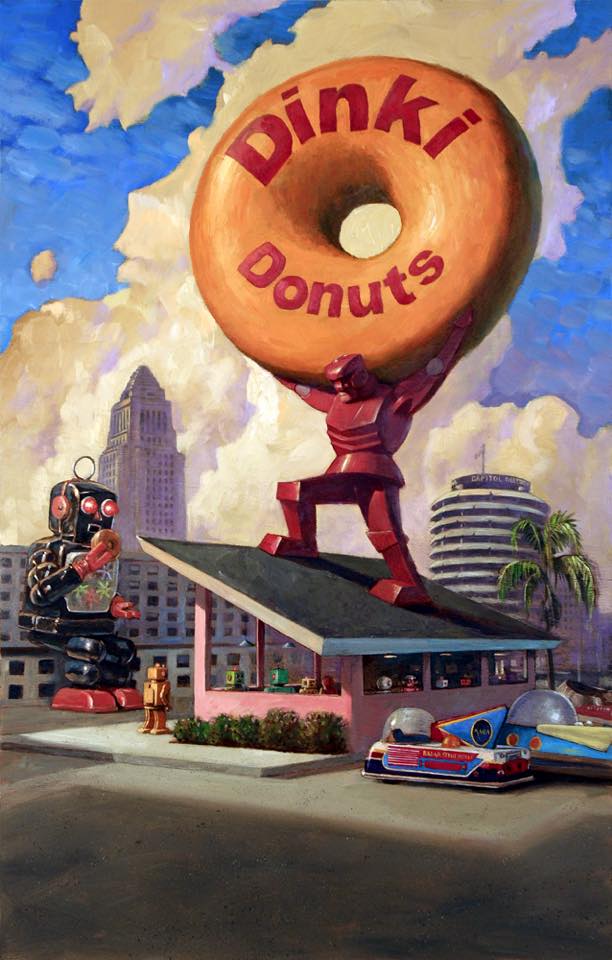
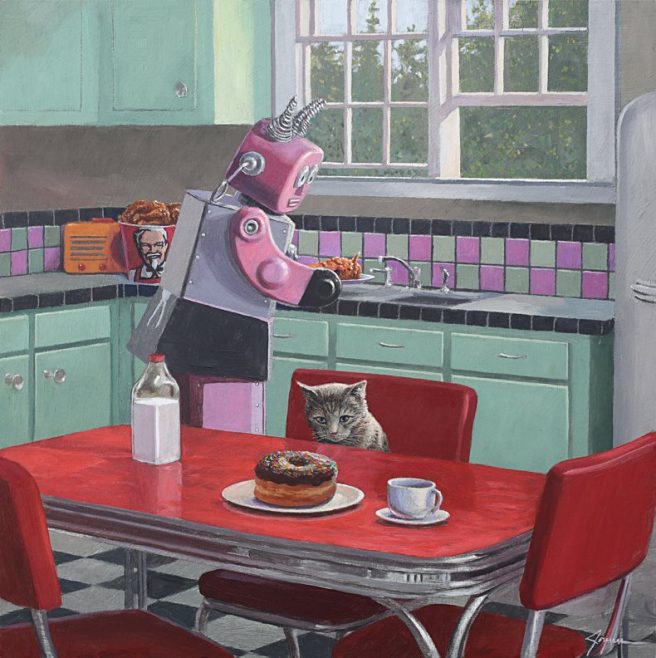
Joyner completes about 20 paintings a year, with his pieces ranging in price from $3,000 to $75,000. George Lucas is one of his most famous buyers, and several of his paintings were used as set pieces for the TV series, “The Big Bang Theory.” His work has been licensed by the likes of Disney, Warner Brothers, and the hit HBO show Silicon Valley.
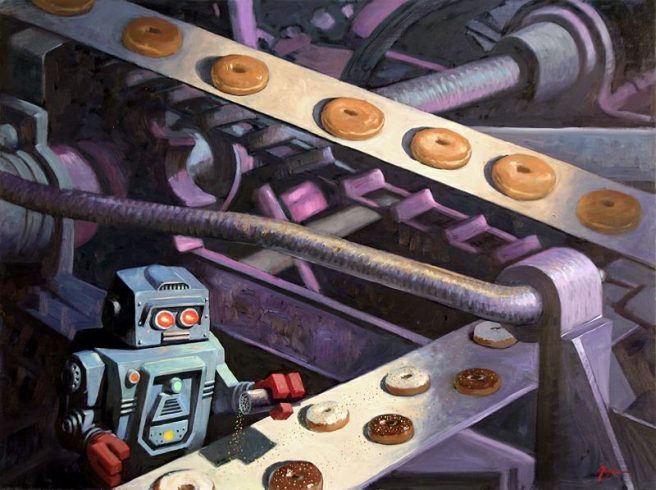
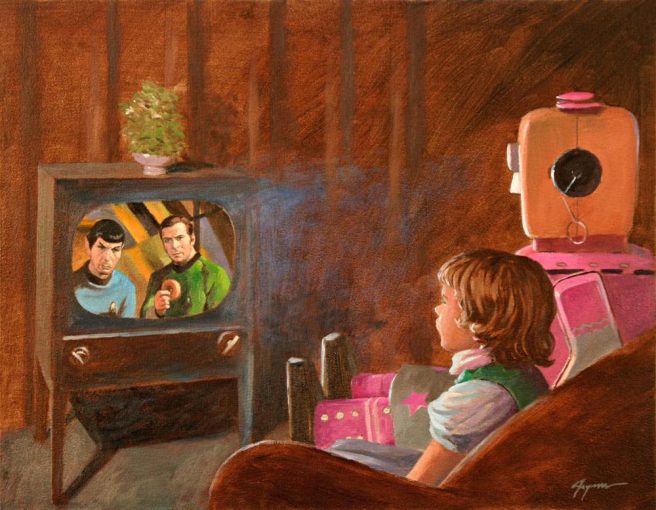
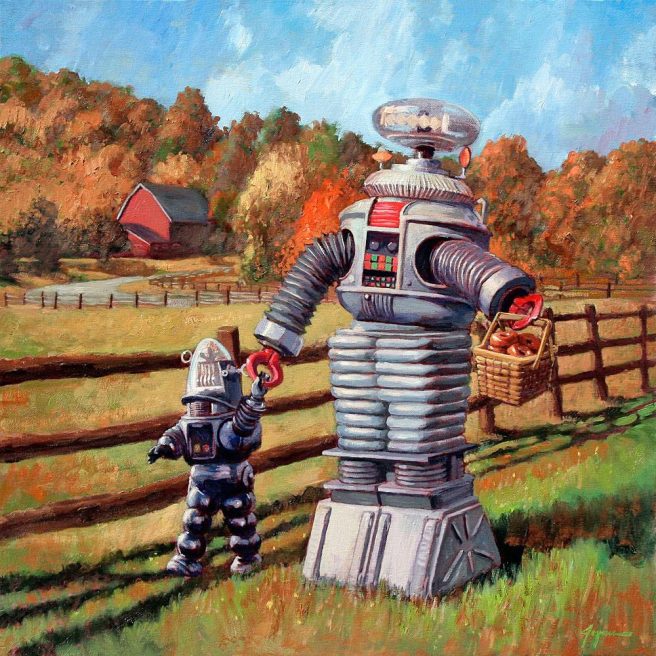
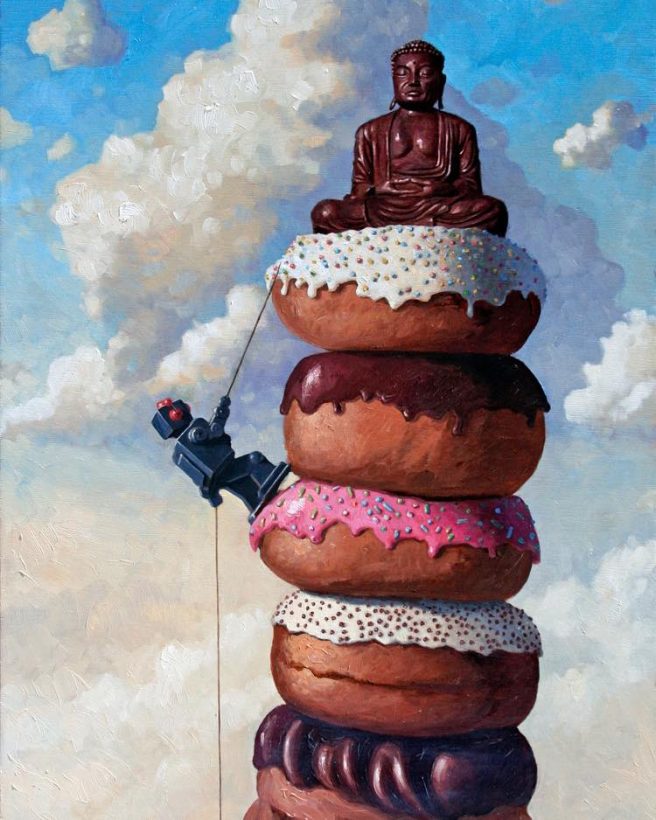
I like American illustrators like N.C. Wyeth, Dean Cornwell, Frank Frazetta, J.C. Lyendecker, N. Rockwell, Jeffrey Jones and several others, as well as the post impressionists like Degas, Monet, and Vincent Van Gogh.
A member of the San Francisco Society of Illustrators and the New York Society of Illustrators, Joyner has been an instructor and speaker at San Francisco’s Academy of Art University and California College of the Arts. His work has been featured in the San Jose Museum of Art’s exhibition, “Robots: Evolution of a Cultural Icon,” and he has shown in numerous galleries and cultural institutions worldwide. He is primarily represented by the Corey Helford Gallery in Los Angeles.
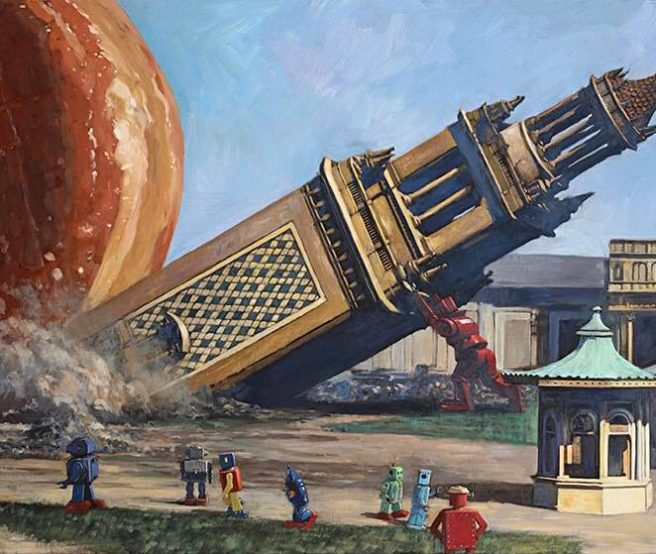

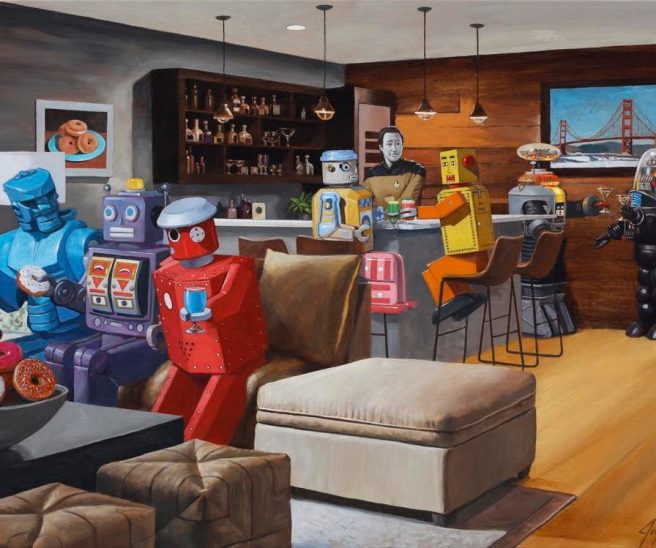
So does Joyner actually like to eat donuts? The story goes that when he was a kid, his mother used to bribe him with donuts to get him to attend Sunday school. Yes, he still likes them today, counting among his favorites plain glazed, French crullers and apple fritters. What’s his favorite donut to paint? Frosted ones with colorful sprinkles.
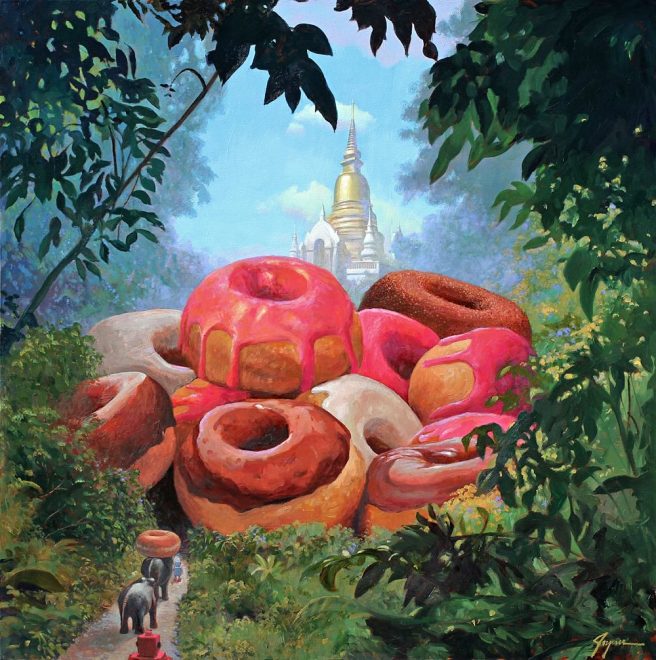
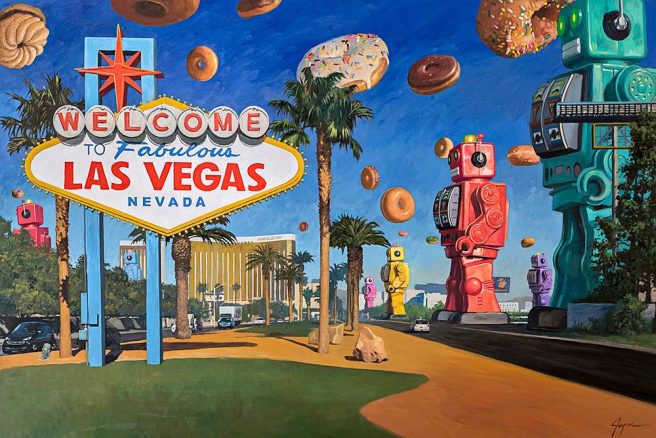
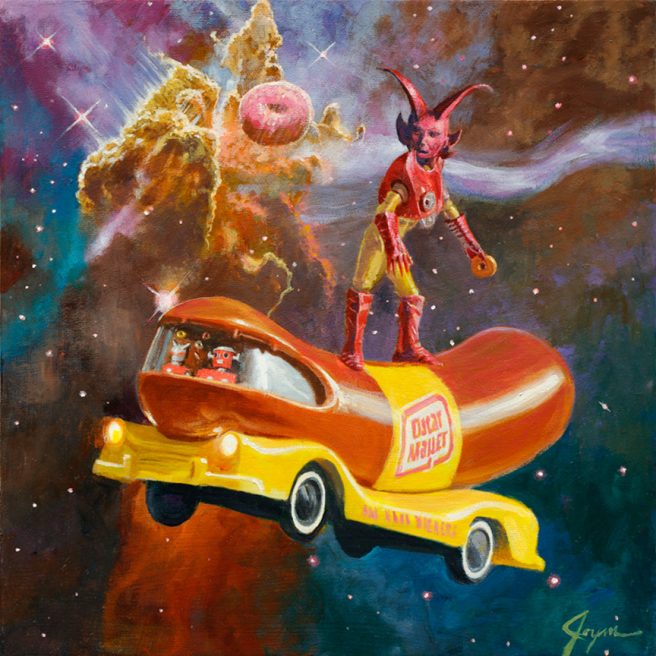
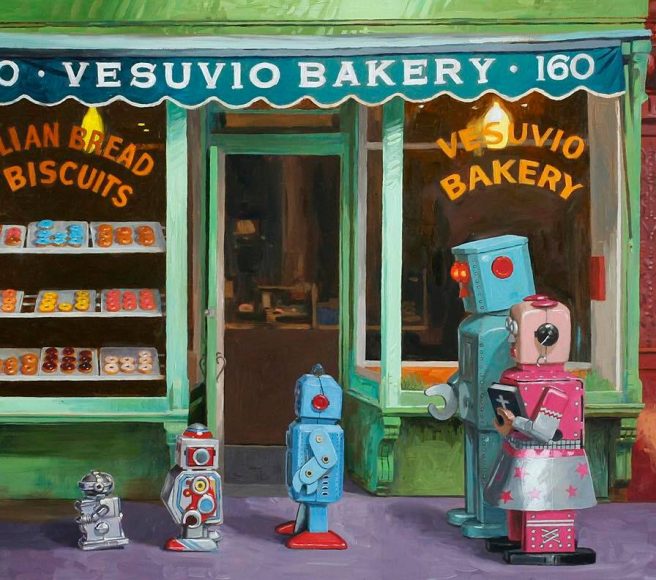
Joyner’s paintings have enabled me to appreciate both robots and donuts in new ways. The juxtaposition of hard and steely with soft and doughy is brilliant. It’s a totally unexpected pairing, one that immediately captivates the viewer, immersing him/her in an alternate reality. Besides, I’ve always believed toys have secret lives. 🙂
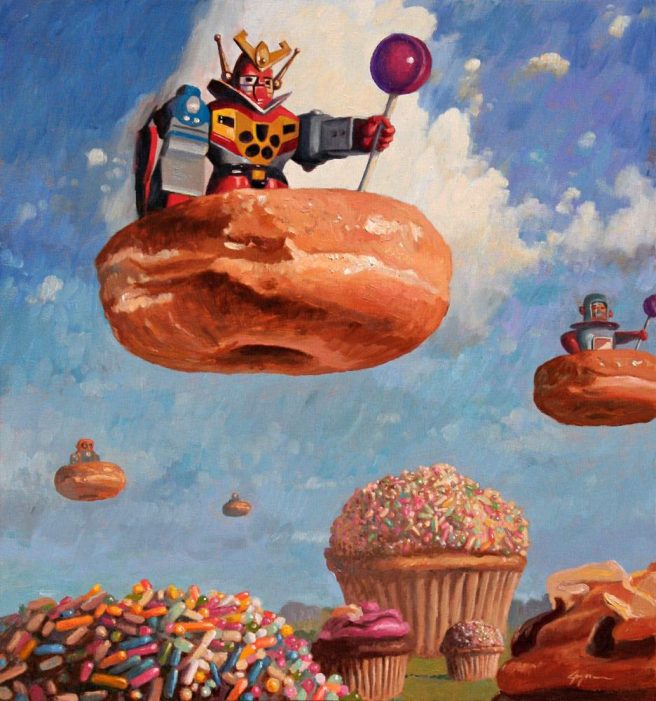
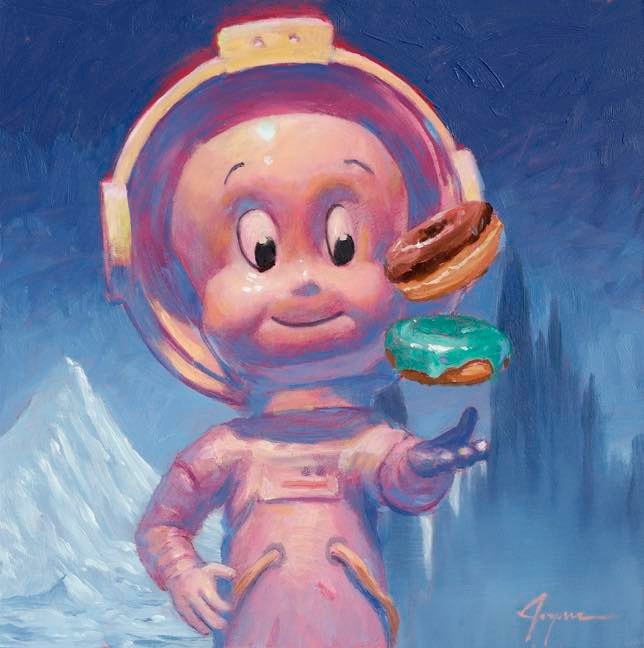
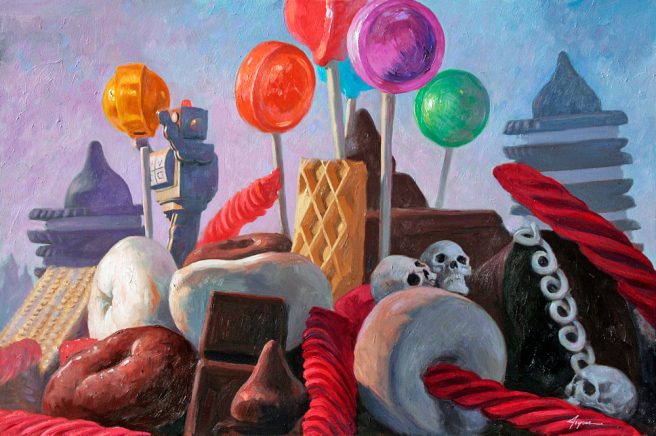
Lots more at Eric Joyner’s Official Website, Facebook Page, and Instagram. Limited Edition prints, unsigned prints, t-shirts and figurines may be purchased via his website shop. His work is widely available online at other sites too, such as iCanvas, Elephant Stock, and the Corey Helford Gallery (originals).
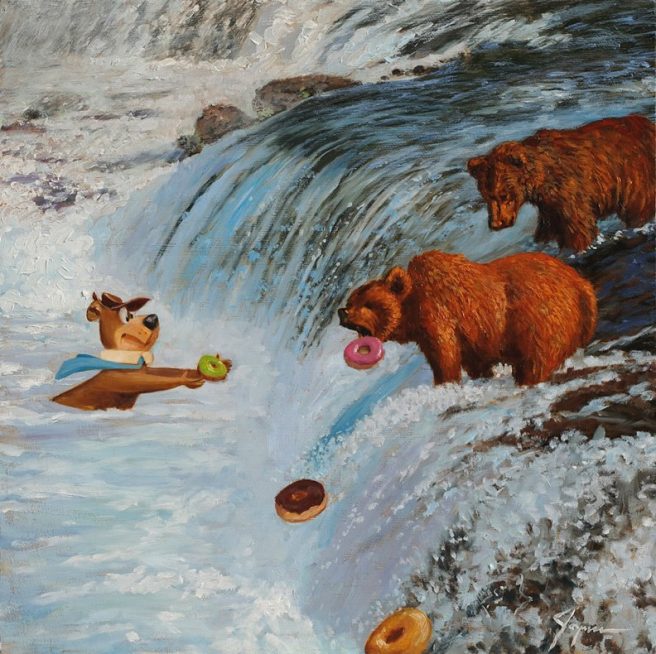
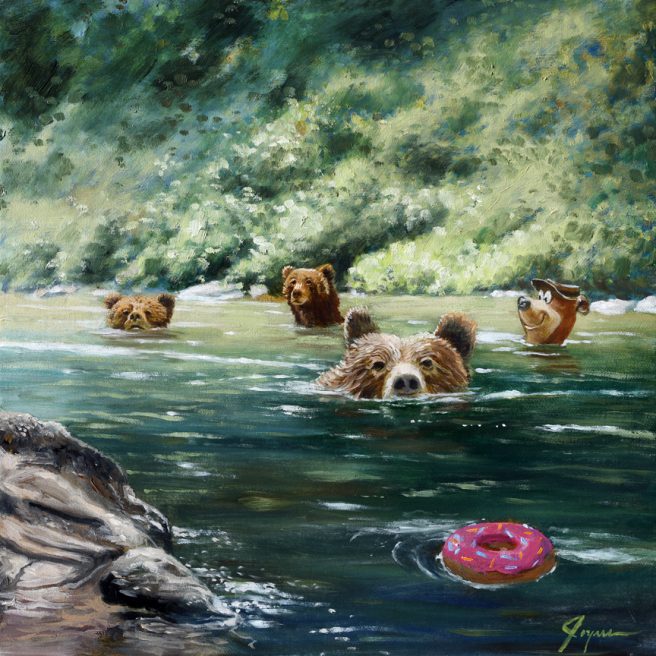
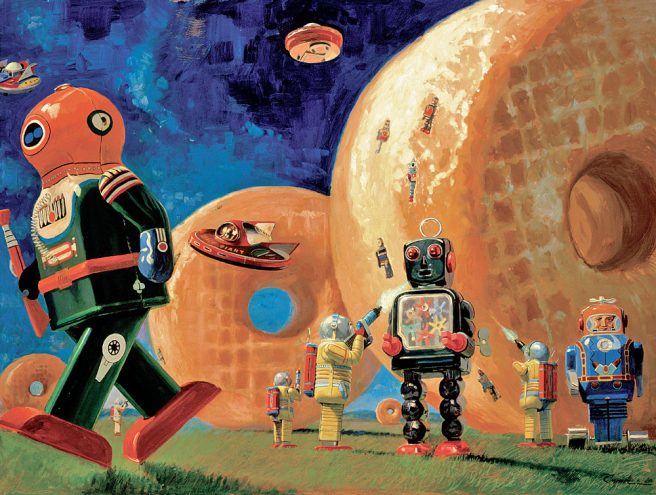
Enjoy this video of Eric discussing his work:
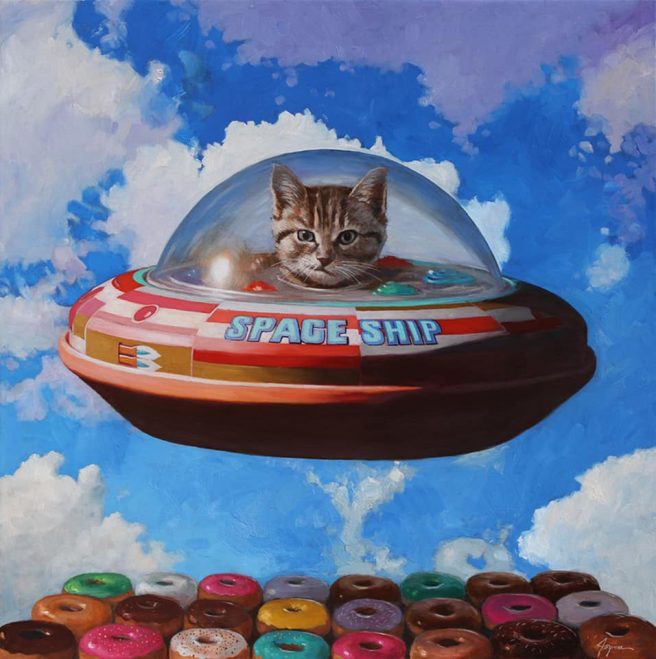

*Copyright © 2024 Jama Rattigan of Jama’s Alphabet Soup. All rights reserved.
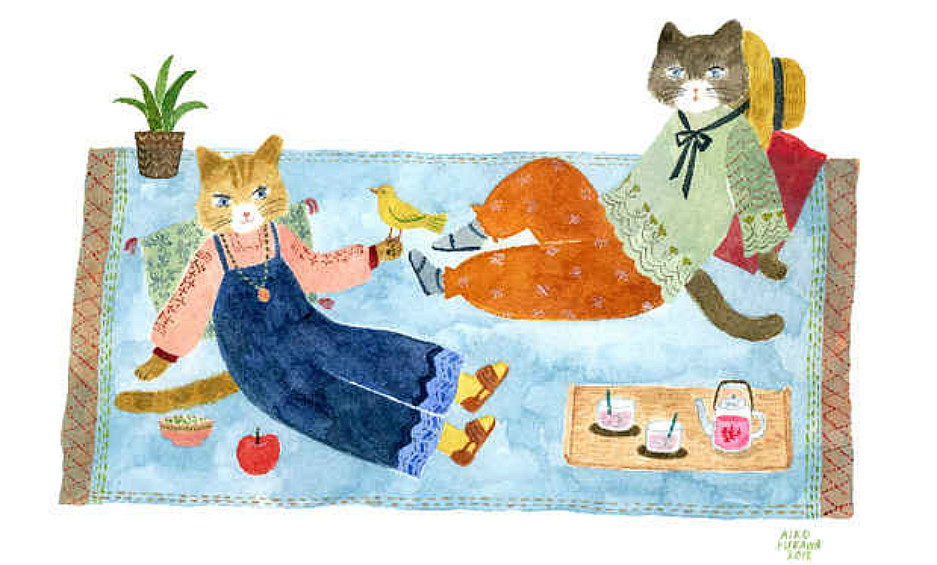
Thanks for introducing me to Eric Joyner’s donut and robot focused art, I’m enjoying that last image with the pun-filled signs, maybe we ought to try a donutcracy…. 😉🍩
LikeLiked by 1 person
Love it!
LikeLiked by 1 person
Love this. Thank you for introducing his work to me! I feel a twinge of inspiration. Maybe with chocolate…
LikeLiked by 2 people
I was wondering when Dunkin’ Donuts would find their way into one of his paintings. I love the steely with the fluffy – they complement each other. Yin & Yang
LikeLiked by 1 person
SO fun, and did I spy a San Francisco Muni bus? Yes!! Made me homesick for the City by the Bay.
LikeLiked by 1 person